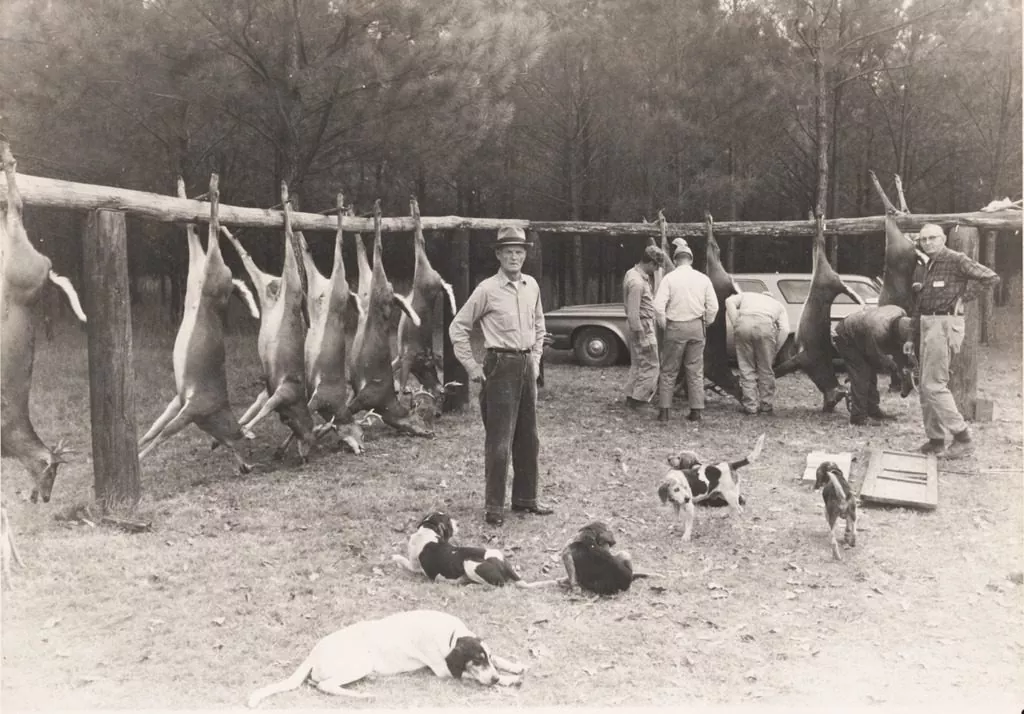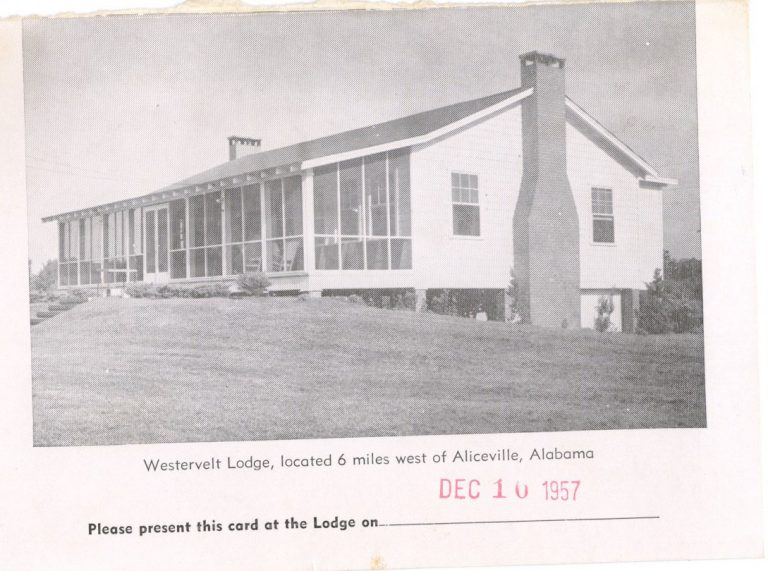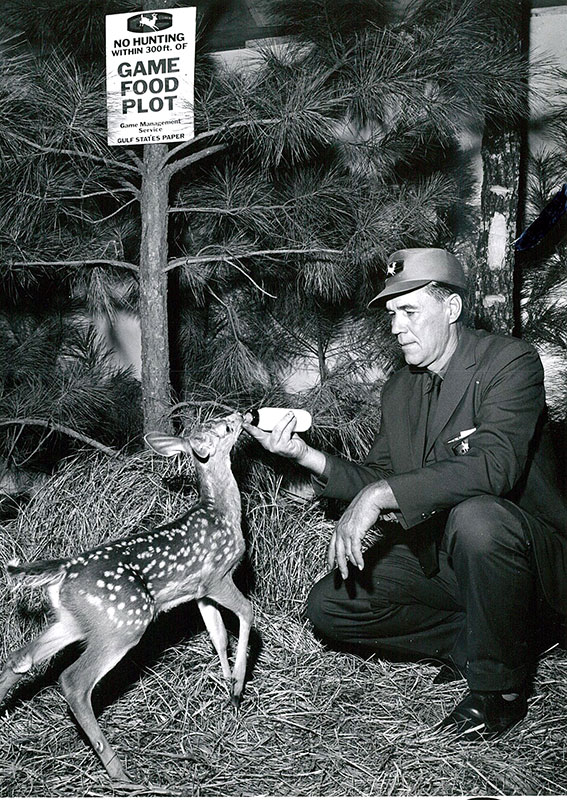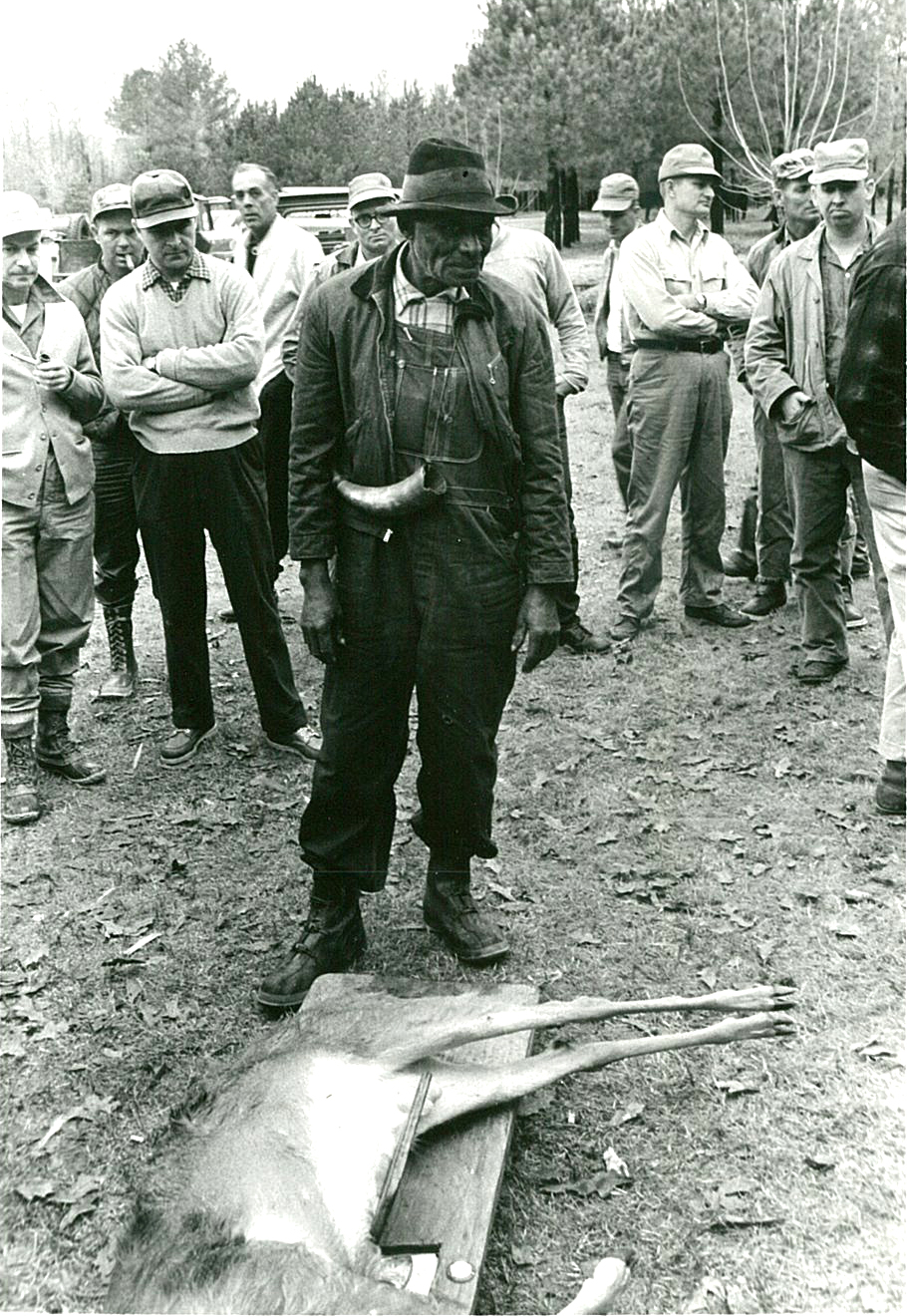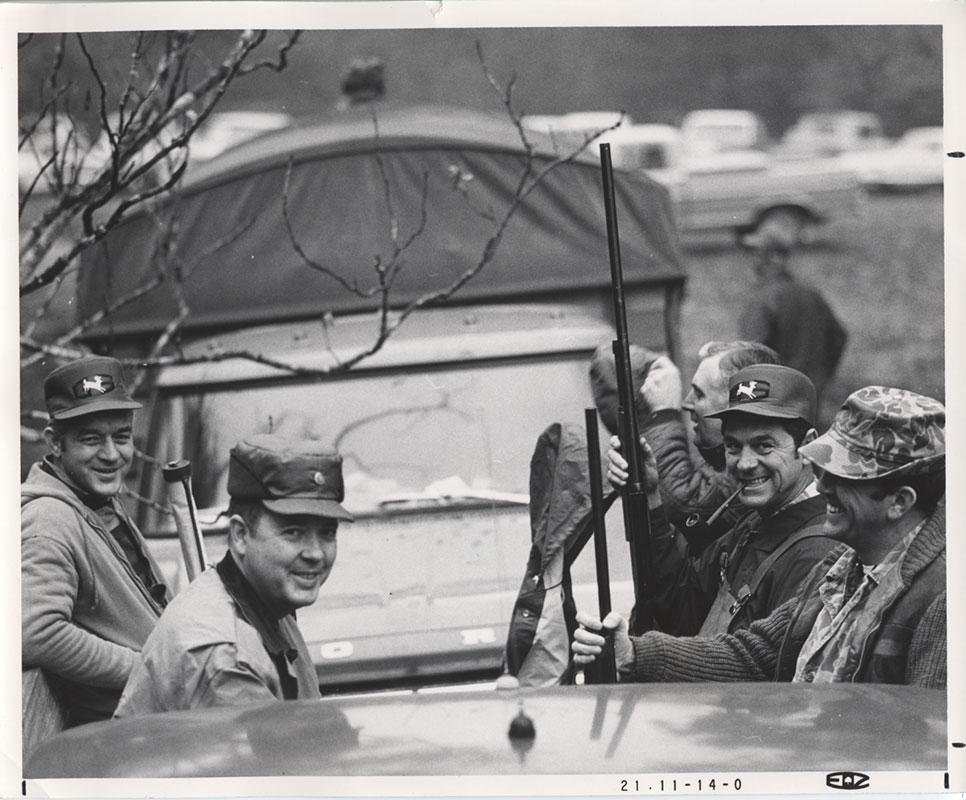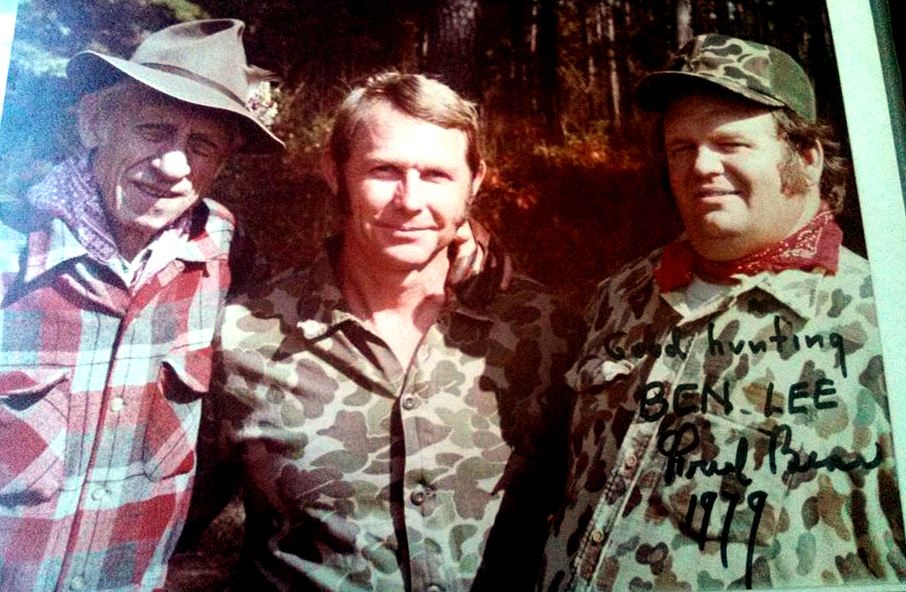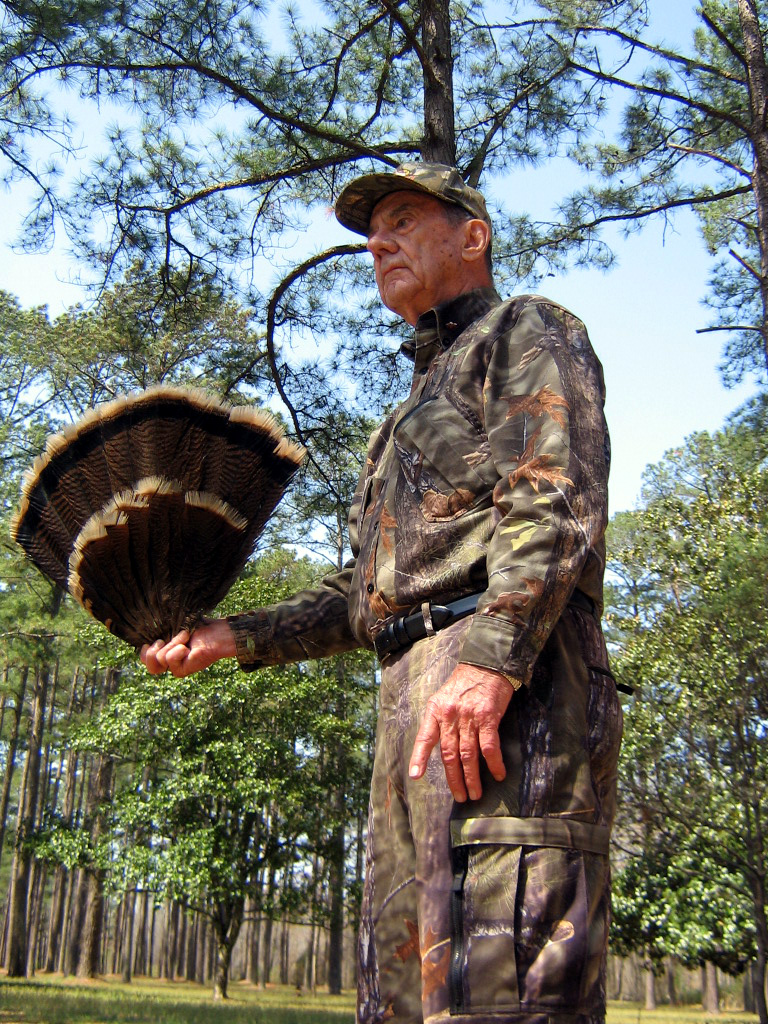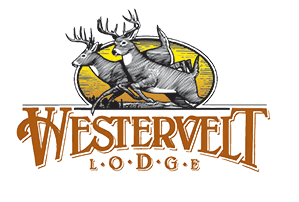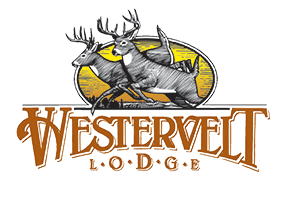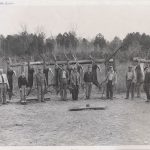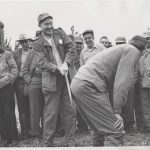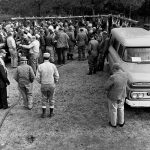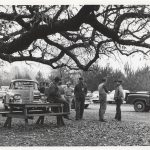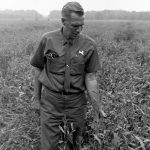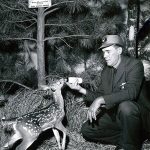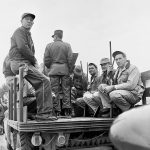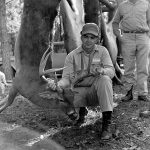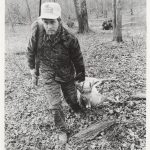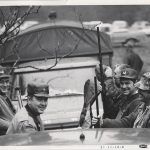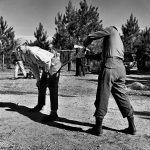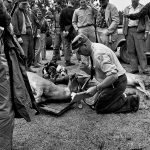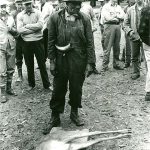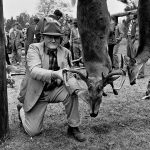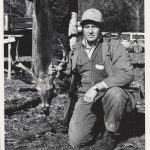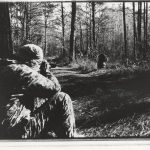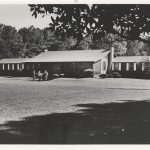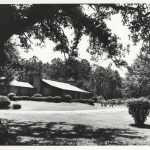THE HISTORY OF WESTERVELT LODGE
Westervelt Lodge hosted its first organized deer hunt on November 30, 1951. On this crisp autumn morning, seventy-eight hunters met at the Ingram Spur around the Mule Barn. Six dogs were cast at different spots. The dogs were furnished and driven by citizens of Pickens County. The first deer taken was a 150-pound buck shot by Mr. V.M. Cooper of Aliceville. Two others were harvested that morning: a 150-pound buck by J.T. Burroughs and a trophy buck weighing 225 pounds with 8 points by Frank Prewitt.
From those very first moments, at Westervelt Lodge, it has always been about the experience. Our nationally recognized professional wildlife and forest management program has attained and preserved our tradition of providing an outstanding, natural hunting experience – a true challenge in a fair chase setting.
THE HISTORY OF WESTERVELT LODGE
Prior to 1951, hunters in Alabama usually hunted at private clubs. Two of the clubs that included Gulf States Paper employees were: Tombigbee Hunting and Fishing Club ( on the Tombigbee River at West Greene, Alabama) and the Mauvila Hunting Club in Greene County. But starting in 1951, Gulf States Paper started a company sponsored hunting program for employees, customers and guests. These hunts were on newly acquired land in Pickens County, located six miles south of Aliceville and known as the Ingram-Day tract—later to become the Westervelt Hunting Preserve and Westervelt Lodge—and comprised some 10,000+ acres. The history of hunts at Westervelt Lodge follows:
1951
November 30, 1951, was the date of the first Gulf States Paper company sponsored hunt. Hunters met that morning at Ingram Spur at the Mule Barn. There were 48 Gulf States employees and 30 adjacent land owners and citizens of Pickens County. Six dogs were cast a different spots. The dogs were furnished and driven by citizens of Pickens County. The first deer killed was a 150 pound buck shot by Mr. V.M. Cooper of Aliceville. Two others were killed by Gulf States employees: a 150 pound buck by J.T. Burroughs and a trophy buck weighing 225 pounds with 8 points by Frank Prewitt. Gulf States Forestry Division personnel assisted the hunt, including Jim Owens, in charge of hunt, Ted Hixon and Virgil Willett in charge of the stands, and John Kirkpatrick, Jim Owens and Reynolds Broadhead helping with the cooking. The second hunt that year was December 8, with sixty Gulf Sates employees and guests. Only two deer were killed during this hunt. The third hunt, also with sixty hunters, was on December 22nd, and four deer were killed. Total deer killed in the inaugural year at Westervelt Hunting Preserve, 9 deer on 3 hunts.
1952
The second year also saw three hunts at Ingram Spur (Mule Barn). First hunt, November 22 for employees, customers, quests – 5 bucks killed. Second hunt, December 4 for employees, customers, quests (60 total hunters) – 5 bucks killed. Third hunt, December 18, for pulpwood dealers (75 total hunters) –9 bucks killed, with the largest a 251# buck with 7 points. A total of 19 deer were killed in the second year of hunting.
1953
December 4, the first hunt held from the Westervelt Lodge (Westervelt Game Preserve). There were 65 employees, customers and guests. The enlarged parking spaces and the game house were also additions to the location. Forestry personnel at the first lodge hunt included, Jim Owens, Frank Jones and Jack Shipp. There were 4 hunts that year, with 19 total deer killed, with the prize of the day being a 10 point buck.
1954
Four company sponsored hunts for employee, customers, guests. A total of 507 hunters, killed 20 deer, weighing 2,783 pounds. Also killed were two bobcats and one red fox.
1955
Five company sponsored hunts for employees, customers and guest. A total of 603 participants killed 15 deer.
1956
Five company hunts, with 25 deer killed. A significant happening in this year was the addi
tion to the company of Ray Redmond, as Chief of Gulf State’s Wildlife Management Program. (More on Ray Raymond later).
1957
Five hunts, with 21 kills. A total of 650 hunters and drivers. High water from the Tombigbee River kept the kill rate low this year.
1958
Four hunts at Westervelt, 25 bucks killed, largest weighed 200 pounds.
1959
Five company sponsored hunts (employees, customers, guests), with 22 deer killed. The low kill rate was partially due to a new State Conservation Department ruling that legal bucks must have at least 4” spikes. Last year, any antlered buck was legal.
1960
Five hunts at Westervelt for employees, customers, guests, averaged 91 guns per hunt. 37 deer killed.
1961
In the first hunt of the year, 9 bucks were killed with the largest weighing 221 pounds, with 8 points. A total of 54 deer were killed on seven hunts with a total of 538 hunters.
1962
Five hunts for employees, guests, average 106 standees per hunt. A total of 56 deer were killed at Westervelt, with the largest a trophy buck weighing 232 pounds, with 8 points. (In 1951, the average hunt had 51 standees at Westervelt)
1963
Three or four hunts were held, with 35 deer killed.
1964
Four employee/guest’s hunts at Westervelt, with 40 deer killed.
1965
The fifteenth annual company sponsored employee, customers, guests deer hunt at Westervelt. There were six hunts, resulting in 56 deer harvested. The largest was a 224 pound buck, with 8 points. Our company wide Wildlife Development Program started. Permits are now required to hunt on company land.
1966
This year set a new record for deer killed at Westervelt Hunting Preserve sponsored hunt. There were 76 bucks and 50 un-antlered deer killed (first time un-antlered deer are legal). The first Bow Hunt for employees was held this year at Westervelt, with 32 hunters. To qualify, they had to hit an 18” diameter target in 2 out of 3 shots at 30 yards. They saw 232 deer, took 27 shots and killed one deer. Gulf States Paper Wildlife Development Program expanded.
1967
One hundred and nineteen deer were killed at Westervelt Sponsored hunts. One was a 212 pound buck with 8 points. (The breakdown was: 59 bucks and 60 doe—for the second year doe was allowed). Four Bow Hunts this year had 20 hunters and one doe killed with an arrow. First year for Primitive Weapons hunting.
1968
Harvest data not available.
1969
Harvest data not available—Game Management Forester, David Warren hired.
1970
The twenty year anniversary of company sponsored hunts at Westervelt Lodge. Six hunts, with 18 bucks killed. Total kills have been less the past two years, but a larger percentage of trophy deer are being harvested. Restocking and habitat development underway. Proceeds from sale of company land hunting permits have been invested in development of better hunting for the public. Plans for improved deer driving for next year’s hunts. Fourth year for Primitive Weapons Hunting; seven deer killed by muzzle loaders during 227 hunting efforts. Three deer killed by archers, out of 109 bow and arrow hunting efforts.
1971
Reduced company sponsored hunts at Westervelt; shifted to Pioneer Preserve near Gordo and Jefferson Preserve in Marengo County. Hunting pressure must be reduced at Westervelt Lodge to maintain long range quality hunting. Only three hunts in two seasons at Westervelt. The years 1973-75 were somewhat transition years for Westervelt Hunting Reserve. Two decades of professional game and timber management had resulted in optimum wildlife levels providing a quality, natural free range deer hunting experience. Westervelt Lodge was becoming famous for the trophy whitetail deer and wild turkeys that roamed its 11,000 acres. Some of the finest deer hunting in the country was done here. Consideration was being given to developing Westervelt into a premium commercial hunting lodge.
1973
In 1973, Gulf States Paper began an in-depth study of the game hunting market to determine the needs of hunters and how well these needs were being met. The results of the examination were encouraging. There was a need for a top quality hunting reserve offering natural hunting experiences on expansive lands, with trophy opportunities, plus unequalled amenities. With the help of a top hunting reserve consultant, Gulf States proceeded with the prototype for just such a hunting lodge.
But 1973 was also the year of a great loss for Gulf States and the hunting profession. Ray Redmond died. He was in charge of the Wildlife Management Program and was responsible more than any one person for the success of the hunting reserve and leased hunting lands. Ray was the first industrial wildlife biologist in the South and he developed and refined techniques of game management, including trapping and restocking game. He truly helped make the company program become a model for other forest industries.
1974
During the hunting season we saw a few changes at the lodge and some preparations for offering the lodge accommodations to paying guests. Jim Haynes became the Forest Recreation Manger and Bill Miller, Sr. was named Lodge Manager. Physical facility expansions included the addition of the rifle range, skeet and trap fields, and an archery range.
1975
Westervelt Lodge was open for business offering the finest deer and turkey hunting on a daily fee basis that is available anywhere. Years of planning and work by wildlife biologists, wildlife game managers, and foresters had paved the way. Customer satisfaction would be the test.
1975-1976
The W. Fred Bear Bow Hunting School offered for first time.
1976 – 1977
The first Wild Turkey Hunting School offered, with Ben Rogers Lee serving as the instructor. Nick Gibson named Marketing Director for Westervelt Hunting Reserve.
1977 – 1978
An article in the November, 1977, issue of Petersen’s HUNTING magazine titled, “Rebel Bucks Galore” by hunting writer Charley Dickey, introduced Westervelt Lodge and quality hunting to the nation.
1978 – 1979
In October, 1978, a WingShooting School was offered for the first time.
1979 – 1980
A Trophy Deer Hunting School was offered for the first time.
1981 – 82
Renowned author Tom Kelly becomes lead instructor for the Westervelt Lodge Wild Turkey Hunting School. Tom’s book “The Tenth Legion” is considered by many to be the holy grail for wild turkey hunters.
1982 – 1983
The lodge was renovated, plus ten new rooms and private baths, and dining room improvements. Bill Miller, Sr. named Forest Recreation Manager (for the lodge and Leased company land for hunting).
Wildlife biologist Nathan Conell is now the Lodge Manager. A Wildlife Nature and Photography School offered for first time. Lodge available to businesses and groups for conferences and seminars, Either combined with hunts or conferences alone.
1983 – 84
Charles Bedwell, named Lodge Manager and Resident Wildlife Biologist.
1986 – 1988
A 3,181 acres added to Westervelt Hunting Reserve with land acquired in the in the Lake Hollalla tract in South Pickens County. Westervelt now offers hunting on approximately 14,000 acres. John Roboski named Forest Recreation Manager upon Bill Miller’sretirement in 1988.
1988 – 1989
Westervelt Lodge turkey hunting was featured in article by turkey hunting expert Tom Kellyin January/February issue of Sporting Classics Magazine.
1990 – 1991
Bass Fishing added as a sporting option on the 23,000 acre Tombigbee Waterway impoundment. Available singularly or in combination with Dove, quail, deer or turkey hunting opportunities. Sporting Clays Course opened September 1991. Consists of three, 50 shot courses, each with different kinds of targets.
1991 – 1992
Westervelt Lodge current sporting options: Deer, Wild Turkey, Quail Hunting, Dove Hunting, Bass Fishing—Wild Turkey Hunting School and Bow Hunting and Bow Hunting School, Sporting Clays, trap and skeet shooting.
2014 – 2015
World champion turkey caller, Eddie Salter, replaces Tom Kelly as the head Wild Turkey Hunting School instructor. Before he turned 20 he won the Alabama state turkey calling contest, a springboard into competitive calling that earned him two World Champion titles and 60 first place titles worldwide. His passion for calling has made him a better turkey hunter, as it literally translates in the woods.
Forest Recreation Managers:
Ray Redmond 1956-73 (now deceased)
Jim Haynes 1973-75 (now deceased)
Judson Wayne Fears 1975-83
Bill Miller, Sr. 1983-88 (now deceased)
John Roboski 1988-1999 (now retired)
Kevin McKinstry 2000-present
Westervelt Lodge Managers:
Bill Miller, Sr. 1973-82
Nathan Connell 1982-83
Charles Bedwell 1983-2000
Jay Steen 2000-2005
Steven Carroll 2005-present
